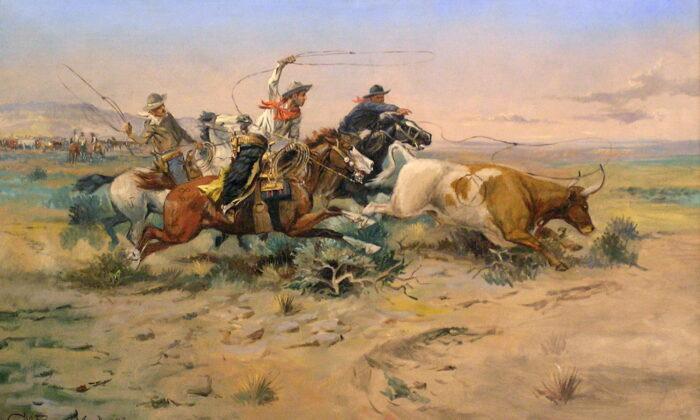Seth Bullock was not a well-known frontiersman prior to the 2004 HBO television series “Deadwood,” which featured him as its main character. However, historians before and since the show’s brief three-season run have always recognized the sheriff as fascinating. Portrayed on the show as a decent man whose inherent goodness was often contradicted by a violent temper, the real Bullock was a level-headed and practical realist, a frontier renaissance man who was by turns a politician, businessman, lawman, soldier, and even a pioneering forest service superintendent who helped put the city of Deadwood, South Dakota, and the Black Hills region on the map.
Born in Ontario, Canada in circa 1847, Bullock was raised in Michigan and started his law enforcement and political career in Montana, where he served on the territorial legislature and acted as sheriff of Lewis and Clark County from 1871 until 1876, marrying his childhood sweetheart Martha Eccles in 1874. He was an exemplar of some of the values Americans cherish the most—courage, determination, and commitment.
His brief time as a Black Hills lawman best illustrates the type of man he was.

Cleaning Up the Black Hills
Beginning in 1877, a plague of stagecoach robberies spread throughout the Black Hills and down the stage routes leading into Deadwood from Cheyenne, Wyoming and Sidney, Nebraska. After popular driver Johnny Slaughter was shot-gunned to death by outlaw Robert “Little Reddy” McKimie, public outcry motivated Sheriff Seth Bullock, who had started his Black Hills law enforcement career in the early autumn of 1876, to organize a network of lawmen and bounty hunters whose mission it was to corral the “road agents” and end the string of highway robberies.Employing formidable and experienced deputies, Bullock and his men took to the Hills quite literally, combing the thick forests of ponderosa pine and narrow gulches to flush out the highwaymen and bring them to bay. The war between the Black Hills lawmen and the road agents lasted from 1877 until 1879, ending when many of the outlaws were either killed or sent to the U.S. Penitentiary at Laramie City, Wyoming Territory.
The pursuit of Little Reddy McKimie became a special project for Seth Bullock, and the determination Bullock displayed during this manhunt is indicative of his talents as a peace officer. In January 1878, Bullock tracked McKimie all the way to Ohio, finding him running a general store under an assumed name in the city of Rainsboro. Bullock immediately arrested McKimie and began the exhausting and tedious work of having the outlaw extradited back to the West. Bullock faced heavy oppositions from McKimie’s lawyers and even the governor of Ohio, who wanted McKimie to stand trial for crimes he had committed there rather than in the Black Hills. Bullock refused to be intimidated and lobbied fiercely for McKimie’s extradition back to the Western territories, believing that he owed it to Johnny Slaughter’s friends and loved ones, including Slaughter’s father, who happened to be the town marshal of Cheyenne, Wyoming.
While all this legal maneuvering and jurisdictional petty squabbling was going on, Bullock had the opportunity to interview McKimie in the local jail. At one point, the murderous outlaw said to the Deadwood sheriff, “I’ll tell you one thing, Bullock. I am going to ‘crease’ [shoot] you if I ever get the chance.” To which Bullock replied, “Alright. If you ever get the chance, I expect you to; but you know damned well I ain’t afraid of you.”




